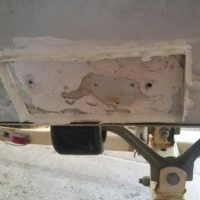When I bought my boat a transducer mounting plate had been screwed on. I removed it and on the recommendation of everyone I talked to online and in store I covered the screws with 3M 5200 as well as the back of the board. Well today I was making some adjustments to my transducer and I noticed the right screw was a bit loose. I took the screws off and the board with the transducer fell off of the transom.
Has anyone else ever heard of this? The real crap of it is that I don’t know how long it has been like this and I am pretty worried that water has been getting into the transom.
Any recemondations for how to move on from here? A new sealant recommendation and new screws are what I am thinking. Anything I could potentially do for the transom? Heat gun or blow dry the area?
